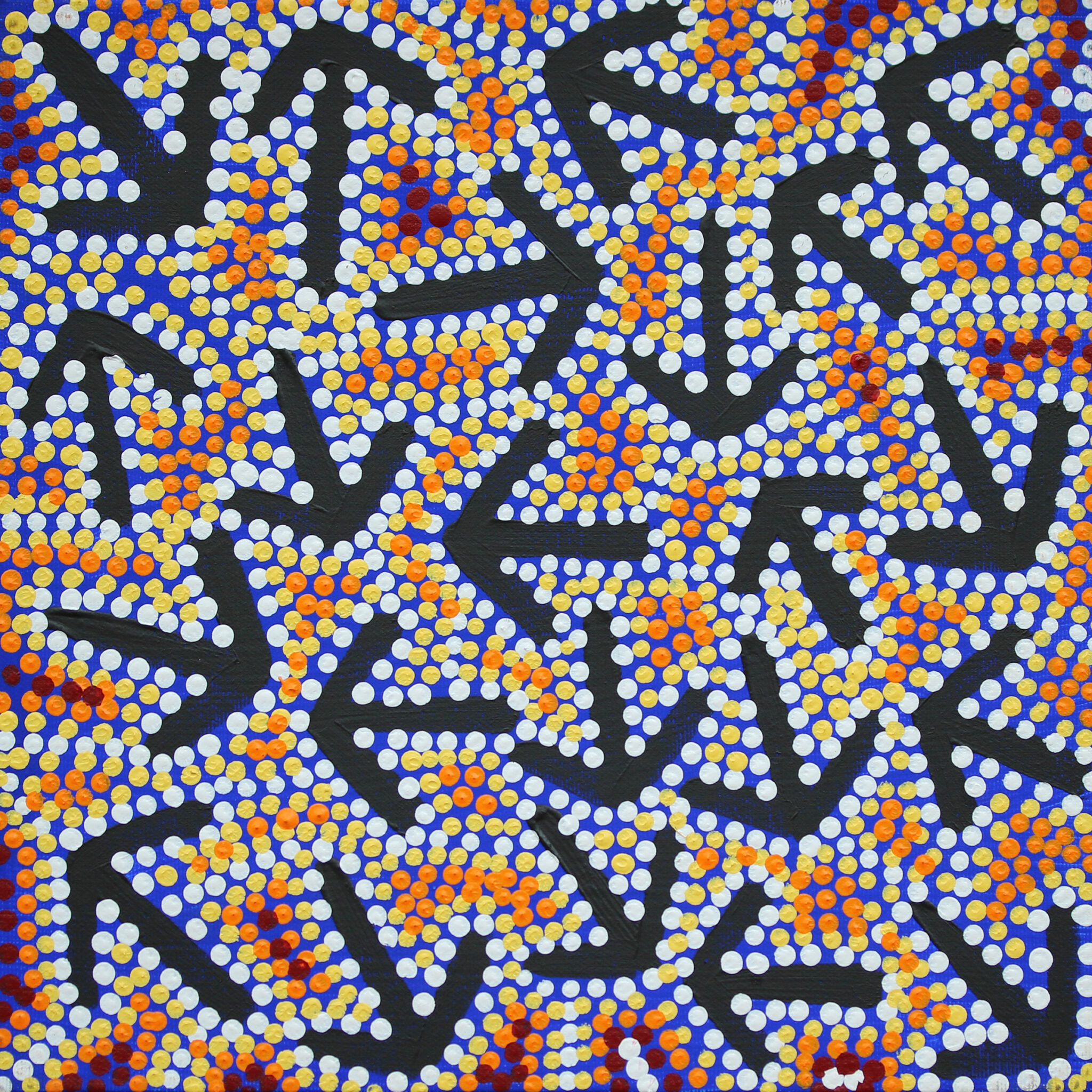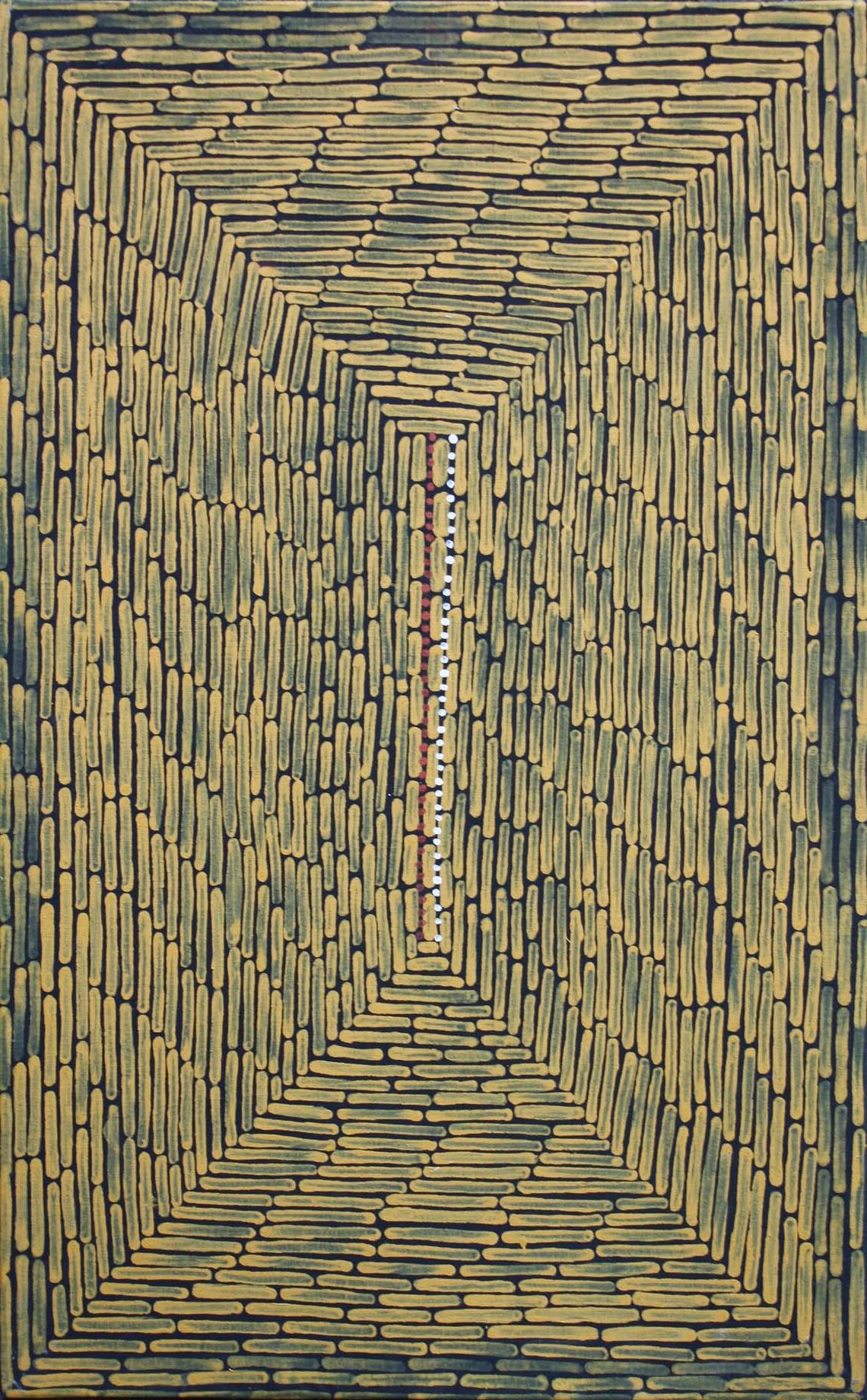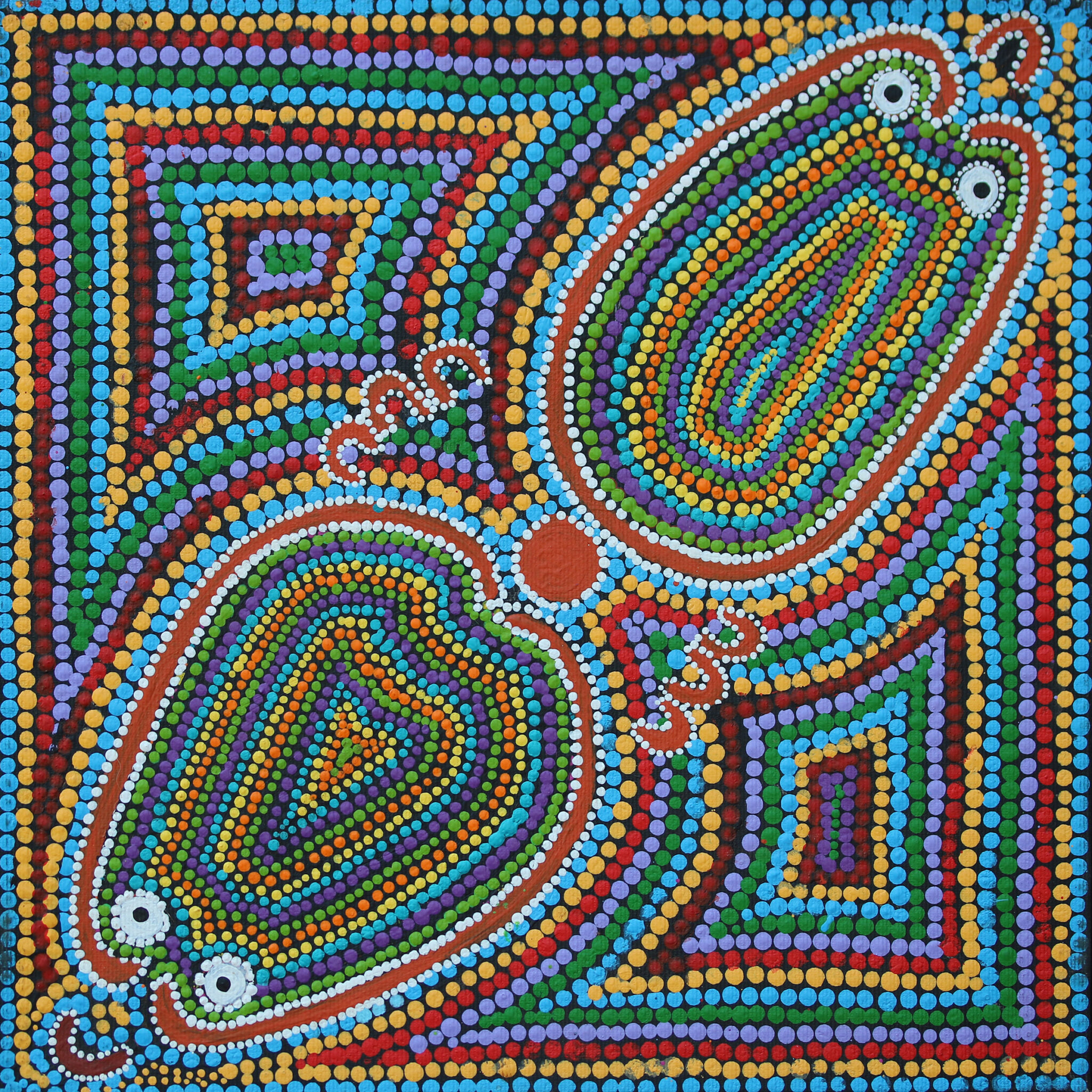Serial:
Size:
$200 (tax inc.)
SOLD
The story:
This painting depict Nakamarra and Napurrurla women hunting for bush foods. The ‘kirda’ (owners) for this story are Nakamarra/Napurrurla women and Jakamarra/Japurrurla men. Yumurrpa and Wapurtali are two major dreaming sites owned by the Nakamarra/Jakamarra and Napurrurla/Japurrurla subsections; these sites are also associated with bush foor Dreamings. Yumurrpa is a major waterhole to the northwest of Yuendumu and a ‘yarla’ (bush potato[Ipomea costata]) Dreaming site. The area north of Wapartali/Yintaramurru (Mt. Singleton) is a ‘wanakiji’ (bush tomato) Dreaming site.
Walpiri women hunt for a number of different bush foods at different times of the year. These include ‘ngarlkirdi’ (witchetty grubs), ‘yunkaranyi (honey ants), ‘jintiparnta’ (bush bananas), ‘janmarda’ (bush onions), ‘pirlana’ (bush beans), ‘ngarlajiyi’ (bush carrots), ‘wayipi’ (small bush carrots), and ‘yakajirri’ (bush raisins). Women traditionally dug for these foods using wooden ‘karlangu’ (digging sticks). The end of the digging sticks were charred and ground on a stone surface to create a bevelled edge. Today many Walpiri women use crowbars (also called ‘karlangu’) to dig for bush foods. Collected bush foods are traditionally carried in ‘parraja’ 9coolomons), which can be carried with a strap made from the ‘ngaltipi’ (snake vine).
In Walpiri paintings, traditional iconography is used to represent the Jukurrpa and other elements. Concentric circles are often used to represent the bush foods that the women have collected, while straight lines can be used to depict ‘karlangu’ (digging sticks). Sinuous lines are often used to represent the ‘ngalyipi’ (snake vine).
Related artwork:
Related products
-
29 Hunter St, Hobart 7000,
Tasmania, Australia - +61 3 6236 9200
- euan@artmob.com.au
Cash – locally only – up to $10,000 only. Layby facilities available. Card details can be advised securely using WhatsApp.
© Art Mob Pty Ltd, Aboriginal Fine Art Dealer, all rights reserved.



